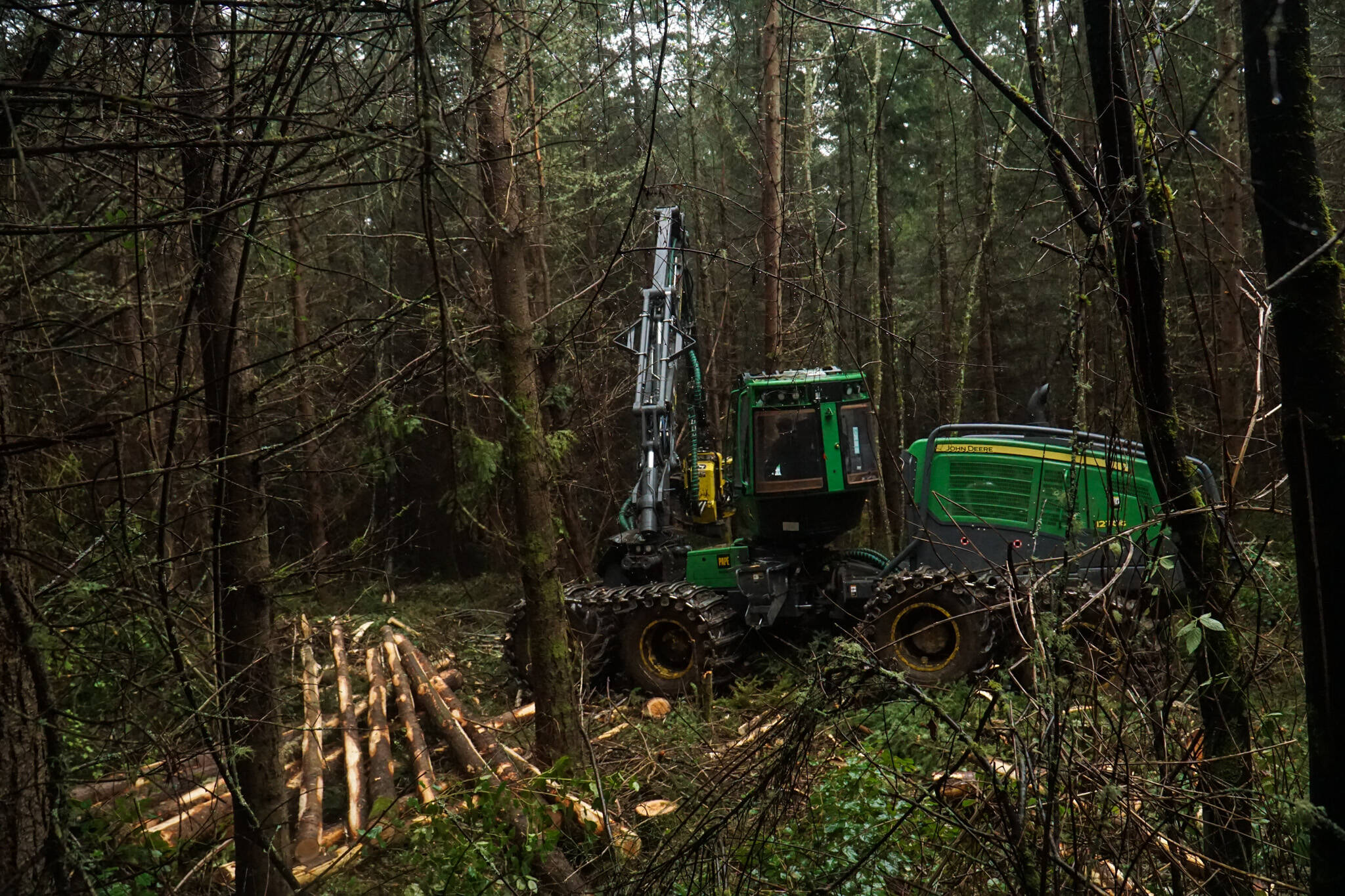These days, a hiker wandering through the Trillium Community Forest might forget they are on South Whidbey entirely and instead believe they are on the forested “Star Wars” moon, Endor. The ominous timber-crack rings out, and large, strange machines push through the dense woods.
These aren’t the evil empire’s armored transport, but instead the state-of-the-art feller bunchers owned by Janicki Logging Co. As they thin the forest in hopes it may one day return to its natural old growth, hikers literally straddle the line between the light and dark side. To the left, a thick, entangling dark forest. To the right, a thin, open space letting in daylight.
Managed by the Whidbey Camano Land Trust, the Trillium Community Forest has begun its final round of thinning, from about 300 trees per acre to 125, its ultimate nudge before nature runs its course and the woods can return to a vibrant, diverse ecosystem.
These loggers no longer use chainsaws, said Land Trust Stewardship Director Jessica Larson. With the feller buncher, a central operator can snag a tree by its base, cut it, clean it and stack it all in a single motion.
“It’s got this space station, science computer station in the middle of it,” Larson said.
Feller bunchers also create their own roads by laying the plush treetops down in front of them, which reduces soil compaction and the overall impact on the trail. Afterward, another great machine called a forwarder comes along and collects the logs.
Once owned by Trillium Corporation, the Trillium Community Forest had been logged for a century before they sold it to Dogwood Development in 2002 to be cleared for housing.
“Luckily,” Larson said, the property was foreclosed in 2009, enabling the Land Trust to come in and protect the woods the following year.
Commercial loggers typically overplant, assuming a certain level of tree mortality, Larson said. Fifteen years later, they thin the baby trees. In another 15, they start logging, eventually clear-cut and start the process over. Because the area was going to a housing developer, Trillium overplanted and didn’t follow up with any of the typical management processes.
This left the Trillium Community Forest originally at about 600 trees per acre, 24 times denser than the average coastal Northwest old growth forest.
In the industry, this level of density is called “dog hair,” Larson said. There’s high fire risk, no understory and the trees show significant signs of stress, such as the lack of a healthy canopy.
The Land Trust won’t take it all the way down to old growth density, Larson said, because enormous trees make up that average of 25 per acre. Taking too many trees out at this point would make the forest vulnerable to weather stress. Also, true old growth woods tower over robust understory. They have both horizontal and vertical structural diversity, which takes time.
The Land Trust’s first round of thinning in 2012 brought the woods down to about 300 trees per acre, and they left it for a decade of growth to ensure it remained resilient to natural pressures.
“Shockingly, ten years have gone by, and I have been here too long,” Larson said. “I was here for the first one. I was here for the second one. I’ve been with the land trust for 15 years, so this is kind of my baby.”
As a tree farm, almost all the trees in the forest are Douglas firs. Once this round of thinning is complete, the land trust will plant western hemlock, eastern red cedar, Sitka spruce and others to create lasting forest health.
“Especially with climate change, having a diversity of different species will build a resilience of that forest,” Larson said.
For now, there is no planned third round of thinning. In the future, they may reassess and fix problems, but this is the last sweeping change.
“We all decided that giving it that push and letting it do its own thing and letting Mother Nature take the wheel is a really good balance for us,” Larson said.
The thinning was paid in part by a Natural Resources Conservation Services grant, which also paid for the planting of other species. In addition, the Land Trust will make a portion of the money from timber sales, which will go right back to the forest, Larson said.
Most of the critics the Land Trust hears from cringe at the concept of logging, Larson said, but once they are educated on the process, they change their tune to excited and appreciative. Others take issue with the temporary trail disturbances during the process of overall forest restoration.
One day, Larson believes all this work will pay off.
“We’re making an old growth forest here. Give it time,” she said. “In 60 to 70 years, people will enter this forest and see what we did.”



